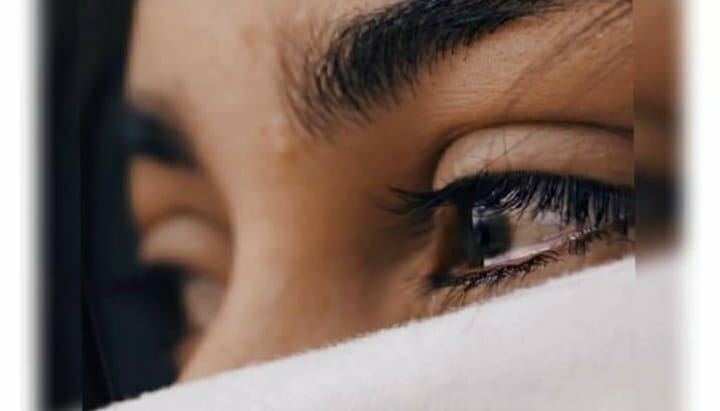Eyelashes commonly referred to as “lashes” are the small wisps of hair that line the edge of the eyelids. The purpose of eyelashes is to protect the eye from dust, debris, sweat, and other elements that may harm or irritate it.
The average human has 75 to 80 lashes on the bottom eyelid and 90 to 160 lashes on the top eyelid. Lashes grow at 0.12 to 0.14 mm per day until they reach their optimum length — usually 12mm or less — then fall out on their own.
Eyelash fullness and length vary, depending on genetics. Eyelash trichomegaly is a condition characterized by eyelash length that extends beyond 12mm. This trait can be inherited or may be a symptom of an underlying condition. In some cases, people with the condition must trim their eyelashes to avoid interference with their vision.
Though everyone’s lashes curve or curl to some degree, the amount of curl is determined by the same cells that affect whether a person’s hair is straight or curly. So, people with curly hair are likely to have eyelashes with a more dramatic curl, while those with straight hair are prone to having straighter eyelashes.
What is crying?
Crying or weeping is the shedding of tears (or welling of tears in the eyes) in response to an emotional state, or pain. Emotions that can lead to crying include sadness, anger, and even happiness. Various forms of crying are known as sobbing, weeping, wailing, whimpering, bawling, and blubbering.
Several factors play a role in an individual’s propensity to cry. Gender differences in crying, for example, have been explored for decades and across the world, and all of the studies reached the same conclusion: Women cry more than men.
Studies found that women cry an average of 5.3 times a month, while men cry an average of 1.3 times per month, with crying defined as anything from moist eyes to full-on sobbing.
Biologically, there may be a reason women cry more than men: Testosterone may inhibit crying, while the hormone prolactin (seen at higher levels in women) may promote it. But a desire to cry is not all natural. A study of people in 35 countries found that the difference between how often men and women cry may be more pronounced in countries that allow greater freedom of expression and social resources, such as Chile, Sweden, and the United States. Ghana, Nigeria, and Nepal, on the other hand, reported only slightly higher tear rates for women.
More recently, researchers from Tilburg University have found that people with “dismissive” attachment styles — or those who tend to avoid close relationships with others — were less likely to cry and tried harder to inhibit their tears than people with other attachment styles (Social Behavior and Personality.) The study also found that people with “preoccupied” styles — or those who might be clingy and overly dependent on others — cried more often than securely attached people. Women of all attachment styles cried more than men.
Benefits of Crying
Researchers have found that crying can benefit both your body and your mind, and these benefits begin at birth with a baby’s first cry. Here are the health benefits of crying:
Helps you recover from grief: Grieving is a process. It involves periods of sorrow, numbness, guilt, and anger. Crying is particularly important during periods of grieving. It may even help you process and accept the loss of a loved one. Everyone goes through the grieving process in different ways. If you find that your crying is extreme or starting to interfere with your everyday life, it might be a good idea to check in with your doctor.
Detoxification: There are three different types of tears: reflex tears, continuous tears, and emotional tears. Reflex tears clear debris, like smoke and dust, from your eyes. Continuous tears lubricate your eyes and help protect them from infection. Emotional tears may have many health benefits. Whereas continuous tears contain 98 percent water, emotional tears contain stress hormones and other toxins. Researchers have theorized that crying flushes these things out of your system, though more research is needed in this area.
Self-soothing: Crying may be one of your best mechanisms to self-soothe. Researchers have found that crying activates the parasympathetic nervous system (PNS). The PNS helps your body rest and digest. The benefits aren’t immediate, however. It may take several minutes of shedding tears before you feel the soothing effects of crying.
Dulls pain: Crying for long periods of time releases oxytocin and endogenous opioids, otherwise known as endorphins. These feel-good chemicals can help ease both physical and emotional pain. Once the endorphins are released, your body may go into somewhat of a numb stage. Oxytocin can give you a sense of calm or well-being. It’s another example of how crying is a self-soothing action.
Mood improvement: Along with helping you ease pain, crying, specifically sobbing, may even lift your spirits. When you sob, you take in many quick breaths of cool air. Breathing in cooler air can help regulate and even lower the temperature of your brain. A cool brain is more pleasurable to your body and mind than a warm brain. As a result, your mood may improve after a sobbing episode.
Rally support: If you’re feeling blue, crying is a way to let those around you know you are in need of support. This is known as an interpersonal benefit. From the time you were a baby, crying has been an attachment behavior. Its function is in many ways to obtain comfort and care from others. In other words, it helps to build up your social support network when the going gets tough.
Emotional balance restoration: Crying doesn’t only happen in response to something sad. Sometimes you may cry when you are extremely happy, scared, or stressed. Researchers at Yale University believe crying in this way may help to restore emotional equilibrium. When you’re incredibly happy or scared about something and cry, it may be your body’s way to recover from experiencing such a strong emotion.
Does Crying Make Your Eyelashes Longer?
No, crying does not make your lashes longer and there is no scientific evidence to confirm that tears from crying promote the growth of eyelashes. The length of your eyelashes is determined largely by genetics, but there are other factors that can affect it too. Medically speaking, “long eyelashes” are defined as longer than 12mm in length.
Nevertheless, tears of emotion contain cortisol, a stress hormone, so when you cry, you are releasing stress in a very real way. The only downside of crying, which differs for everyone, is the amount of swelling in the eyes, nose, and mouth that goes along with it. That generally doesn’t last long, though, and most people feel a sense of relief after a good cry.





